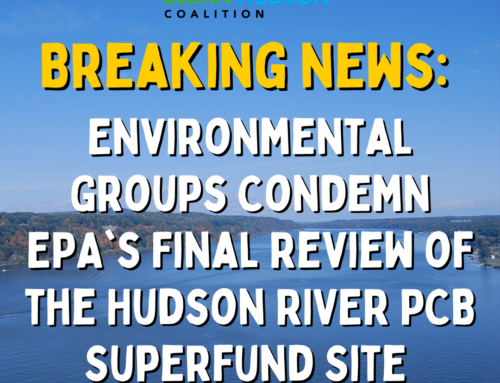In case you missed the live stream of our Congressional Briefing, Protecting America’s Water Amid Growing Threats, you can watch it in full here.
Protecting America’s Water Amid Growing Threats was hosted by the Hudson River Sloop Clearwater, the Environmental and Energy Study Institute (EESI), and Clean Water Action.
All materials from the briefing are now available at www.eesi.org/062917water.
There you will find:
- Speaker Slides
- Video Recording
- Audio Recording
- Highlights (which are also available below)
Please take a couple minutes to complete a post-briefing survey at www.eesi.org/survey.
BRIEFING HIGHLIGHTS
Brent Bolin, Chesapeake Regional Director and Acting Political Director, Clean Water Action
- Bolin highlighted the impact federal clean water protections have had using Ohio’s Cuyahoga River as an example. The Cuyahoga River caught fire in 1969 from years of industrial waste pollution, but is now substantially cleaner. This example shows what is at stake.
- The Trump Administration has proposed severe cuts in environmental programs, with water programs being particularly hard hit [the proposed 2018 budget cuts the EPA’s budget by 31 percent]. The Administration is attempting to eliminate or curtail several programs and rules that protect clean water, including the Clean Water Rule [which was enacted in 2015]. The Clean Water Rule specifies what bodies of water the Clean Water Act applies to, and is designed to protect upstream headwaters and small streams that ultimately provide the drinking water for one-third of all Americans.
- The current administration also is reconsidering a regulation that limits water pollution from power plants. It is estimated that 23,000 miles of rivers and streams in the United States have been polluted by heavy metals and other toxins from coal-fired power plants.
John Cronin, Original Hudson Riverkeeper and Time Magazine “Hero for the Planet”; Senior Fellow for Environmental Affairs, Pace University’s Academy for Applied Environmental Studies
- According to Cronin, “The Clean Water Act is more important now than ever before because it stopped working so long ago.”
- Cronin stressed that the United States has failed to achieve the goals of the Clean Water Act, and now “the stakes are higher than ever.” Cronin called for a bipartisan Congress to protect and reform the law.
- Primary goals of the Clean Water Act, passed in 1972, were to restore water quality to support the propagation of fish, shellfish, and wildlife by 1983, and to eliminate the discharge of pollutants by 1985.
- However, only 28 percent of U.S. rivers and streams are in good condition, and over 40 percent of U.S. waters are the subject of fish health advisories. Drinking water contamination has resulted in about 19.5 million cases of illness every year.
Mustafa Ali, founder and former Director, EPA Environmental Justice Office; Senior Vice President of Climate, Environmental Justice & Community Revitalization, Hip Hop Caucus
- Ali encouraged policymakers to spend time in communities to gain a better understanding of how water quality directly impacts people, especially the nation’s most vulnerable.
- The Flint water crisis, Dakota Access Pipeline, and the BP oil spill are reminders that communities of color, low-income communities, and indigenous populations are disproportionately affected by environmental issues.
- Ali reminded the audience that together, people have the power to protect air, water, and land.
Jeffrey Levinton, Marine Ecologist, The River Project; Expert on marine community ecology, restoration ecology, and evolutionary biology
- Levinton presented a case study of how a community and existing legislation worked together to revive polluted waters. A factory in Foundry Cove, located on the Hudson River, produced nickel-cadmium batteries for the Nike missile during the Cold War. The factory sent cadmium waste into the Hudson River, resulting in its sediments containing toxic levels of cadmium.
- In 1980 Congress passed the Superfund Act, which makes companies liable for pollution cleanup. With industry funds, local New York activists were able to dredge Foundry Cove and remove 95 percent of the cadmium from its sediments.
Aaron Mair, former President, Sierra Club Board of Directors; former Epidemiological-Spatial Analyst, New York State Department of Health
- Mair discussed the importance of protecting the Clean Water Act for the communities that depend on water for subsistence, recreation, and cultural practices or connections. He echoed Ali’s point that communities of color and indigenous populations are often those most burdened by industrial and toxic waste.
- According to Mair, “pollute-ocrats are bipartisan.” Campaign donations influence government decisions to change or reform laws to favor those that pollute. Mair insisted that in a healthy democracy, people must work together to fight against the “pollutocracy” so as to protect the environment and protect people’s rights.
Rep. Sean Maloney (NY-18)
- Rep. Maloney has introduced legislation that would require water quality testing for every municipal drinking water supply in the country. Currently, the United States only requires testing water for communities with populations over 10,000.
- EPA funding is critical for protecting clean water. Hopewell Junction, New York, suffered for years from contaminated water, and the toxic chemicals in the groundwater started to poison the air inside homes. The EPA recently secured federal funding to clean up the soil and groundwater contamination, a process which is expected to start in a couple of months.
- As the Trump Administration seeks to reduce funding for the EPA and rescind the Clean Water Rule, Rep. Maloney’s closing message was to stay engaged and determined. He emphasized, “When we stand together, we can stop the effort to bring us back.”
Les Jacobowitz, Attorney and Partner, Arent Fox LLP
- Jacobowitz highlighted the importance of a bipartisan effort to protect the environment and embrace renewable energy. The Clean Air Act, Clean Water Act, and Toxic Substances Control Act were all bipartisan pieces of legislation. Currently, the five states in the United States with the highest percentage of power generated from wind are Republican-majority states [namely, Iowa, Kansas, South Dakota, Oklahoma, and North Dakota).
- If no action is taken against climate change, temperatures in several states that voted Republican in last year’s presidential elections—such as Idaho, Utah, and Montana—are expected to rise by 4.5 to 5.4 degrees Fahrenheit in the next 30 years, according to Jacobowitz’s estimates. Inaction against global warming could also reduce the country’s GDP by 0.2 to 2 percent.
- “Preservation of our environment is not a partisan challenge. It’s common sense.” –Ronald Reagan, 1984.
Brenda Lee Richardson, Interim Managing Director, Earth Conservation Corps
- Richardson has worked on the Anacostia River for 30 years. The Anacostia River was once on the list of the ten most polluted rivers in the United States, but community involvement has made significant improvements possible.
- Earth Conservation Corps is working with EPA scientists to conduct water monitoring and teach children how to be citizen scientists.
Michael Frisk, Professor, Stony Brook University School of Marine and Atmospheric Sciences
- Frisk highlighted the need for science to answer practical questions. Frisk’s research looks at the importance of ocean and river health in protecting the endangered Atlantic sturgeon.
- As Atlantic sturgeon move along the coast of Long Island, New York, they have an average annual mortality rate of 12 percent (sturgeon need a mortality rate of no more than 6 percent to promote species recovery). Science can help to develop sturgeon management plans that minimize negative human interactions while also having minimal impacts on coastal communities dependent on fishing.
Joseph Warren, Associate Professor, Stony Brook University Acoustic Laboratory for Ecological Studies
- Warren works with the River Sloop Clearwater to collect fish data along the Hudson River. An increase of menhaden (small bunker fish) has led to an increase in whale encounters off the coast of New York City (Humpback whales, for instance, feed on bunker fish). Half of the whales now seen close to New York shores show evidence of ship strike.
- Warren expressed the need for long-term monitoring of forage fish, like the bunker fish, to understand changes in their habitat and population. This will better inform conservation strategies for the whales and other animals that feed on these fish.
Tinya Seeger, Daughter of Pete Seeger
- “We need to love our rivers. They feed the whole planet,” said Seeger.
- Seeger urged Congress to protect the Clean Water Act and warned of the potential consequences of its elimination—an increase in birth defects, plant and animal extinctions, and more unhealthy chemicals in the food chain.
Many thanks to all of our partners who made this incredible forum possible.





